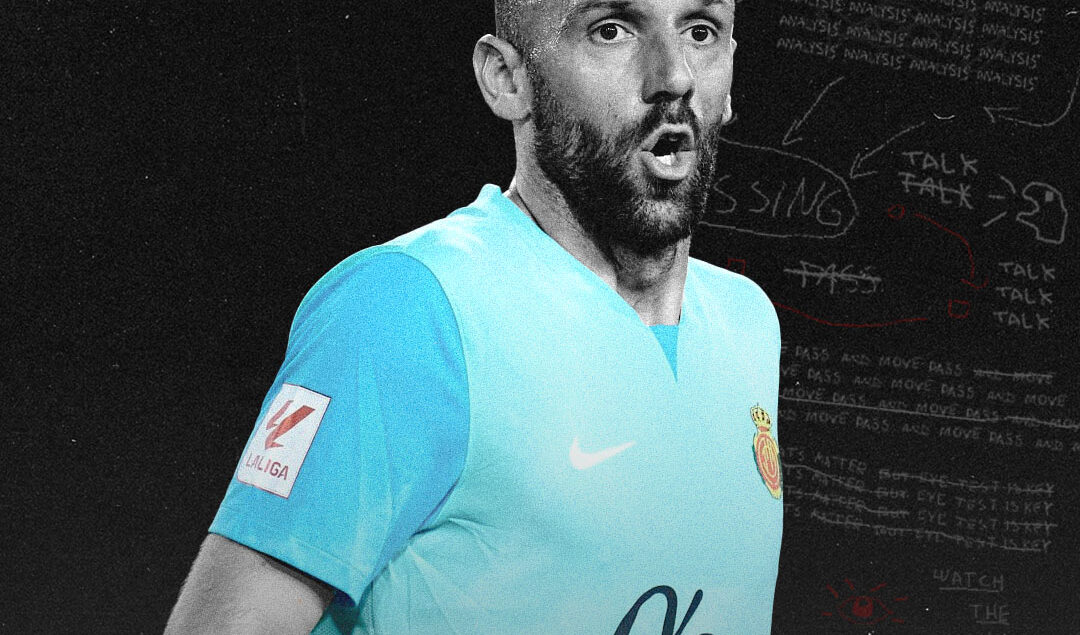Tactical Analysis: Javier Aguirre’s Mallorca
Founded in 1916, Real Club Deportivo Mallorca had to wait until the 1990s for their time in the spotlight. The Balearic side reached the 1990/91 Copa del Rey Final, with Alfredo’s 111st-minute goal seeing Atlético Madrid prevail 1-0 at the Bernabéu. Between 1997 and 2003, Mallorca finished third in La Liga on two occasions, won their first-ever trophy with the 1997/98 Supercopa de España, lost to Lazio in the 1998/99 Cup Winners’ Cup Final, and reached two Copa del Rey Finals.
Their greatest moment came on June 28, 2003, when goals from Walter Pandiani and a brace from Samuel Eto’o saw them prevail 3-0 in the Copa del Rey Final against Elche. Since then, it has been a tumultuous two decades for Los Piratas, who were relegated to the third tier in 2017 for the first time in 36 years. Back-to-back promotions would see them return to the top-flight in 2019/20, only to immediately suffer relegation.
After bouncing back to La Liga, Mallorca found themselves in grave danger of suffering a similar fate with the club inside the relegation zone with nine matches to go. Javier Aguirre took charge on March 24, 2022, keeping the team up on the final day of the season at the expense of Granada, before guiding them to a ninth-place finish in 2022/23. Despite losing star player Lee Kang-in to Paris Saint-Germain for €22 million in the summer, Mallorca have continued to make strides under their Mexican manager.
Los Bermellones find themselves 14th in the table with nine matches left, eight points above the drop, and they have a golden opportunity to return to European football for the first time in 21 years. After brushing past lower-tier sides Boiro, Valle de Egüés, and Burgos, Mallorca held off Segunda side Tenerife with a 1-0 victory courtesy of Cyle Larin’s 120th-minute goal. The Canadian opened the scoring early on in the following round, and despite playing the final half-hour with 10 men, Mallorca secured a 3-2 win against Girona courtesy of a brace from Abdón.
After drawing 0-0 in the first leg, Giovanni González put Mallorca ahead after halftime, only for Mikel Oyarzabal to level proceedings in the 71st minute. The match went to penalties, with Oyarzabal missing the first spot-kick. It proved to be the only miss of the shootout, with Mallorca prevailing 5-4 in San Sebastián and booking their ticket for the Copa del Rey Final, where they will face off against Athletic Club on April 6 in Seville’s Estadio de La Cartuja.
Mallorca have scored just 25 goals after 29 league matches — only Cádiz have scored fewer — and yet, they have emerged as a thorn in the side of Spain’s best clubs, holding Barcelona to a draw and beating Girona in the cup and the league this season. Today, we’re delving deep into the tactical intricacies of Javier Aguirre’s Mallorca.
On paper, the ‘Ensaimada Mecanica’ line up in either a 5-4-1 or a 5-3-2 in possession. Larin has scored two goals and two assists in 27 appearances and racked up 7.56 xG, second only to his strike partner Vedat Muriqi (7.66), who sits with Abdón as the club’s top scorer in La Liga with five goals. Despite this underperformance, Larin is vital in one of Mallorca’s two main avenues of creating attacks. His physicality and hold-up play is incredibly useful in their long balls, making himself a formidable presence against some of the league’s top sides.
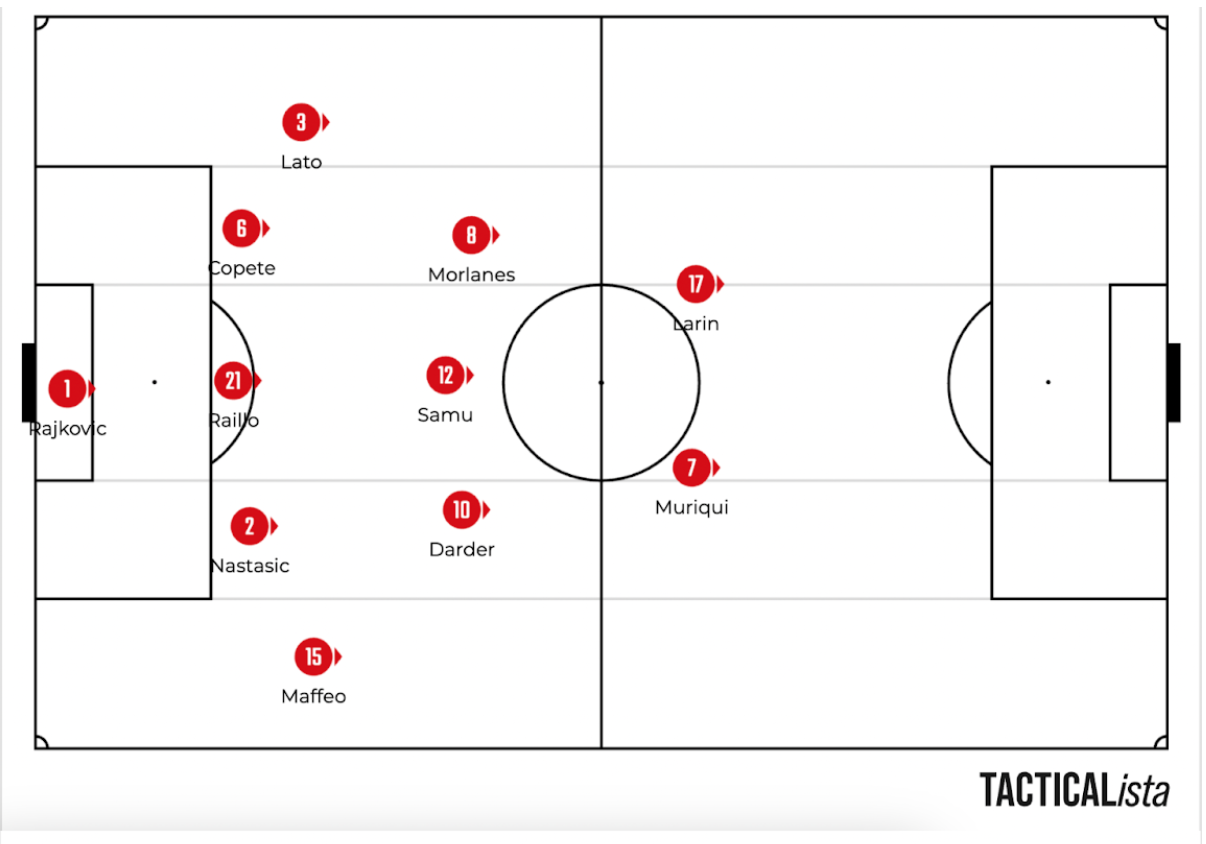
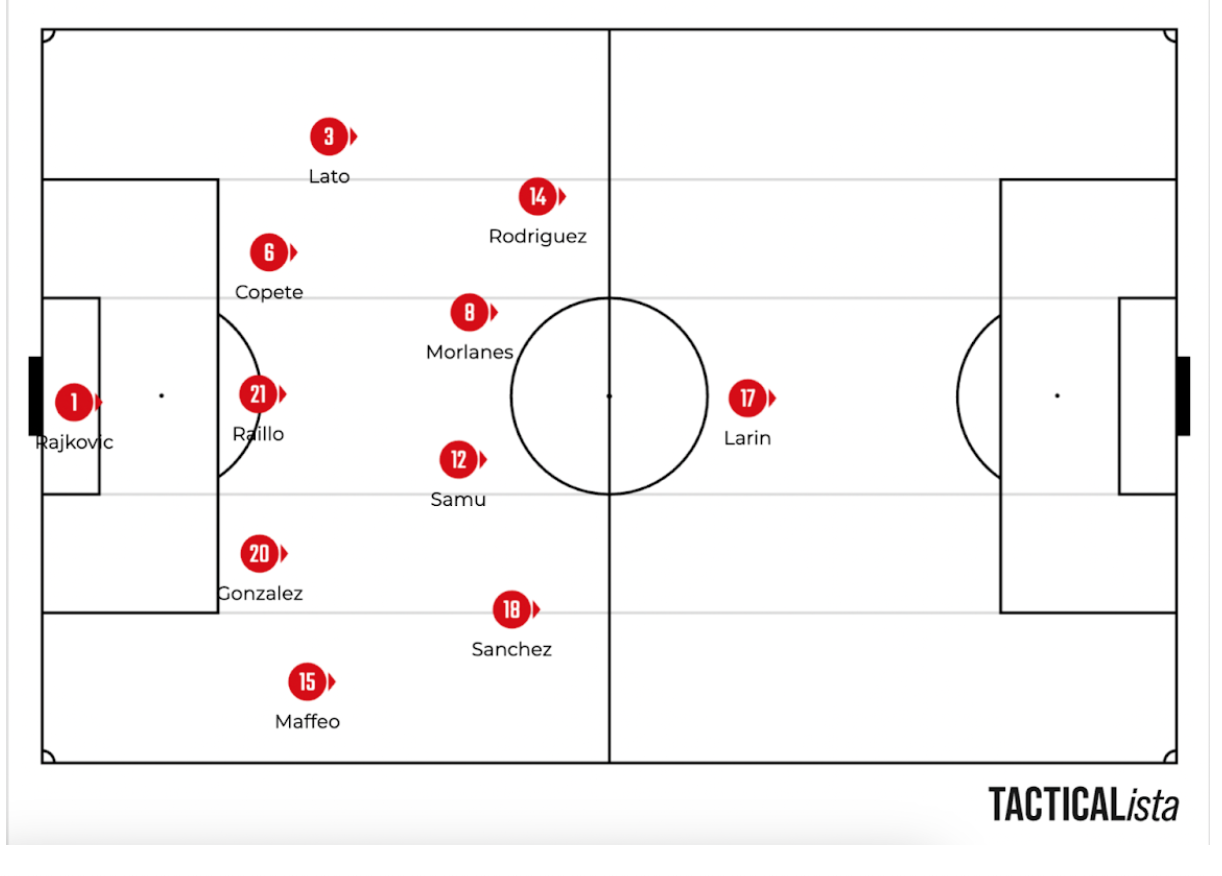
Here, we see an example of Mallorca in the first phase of possession. The ball had just arrived at the goalkeeper’s feet before Rajković was forced to boot it long, with Muriqi getting his head to it but unable to create a chance on the counter.

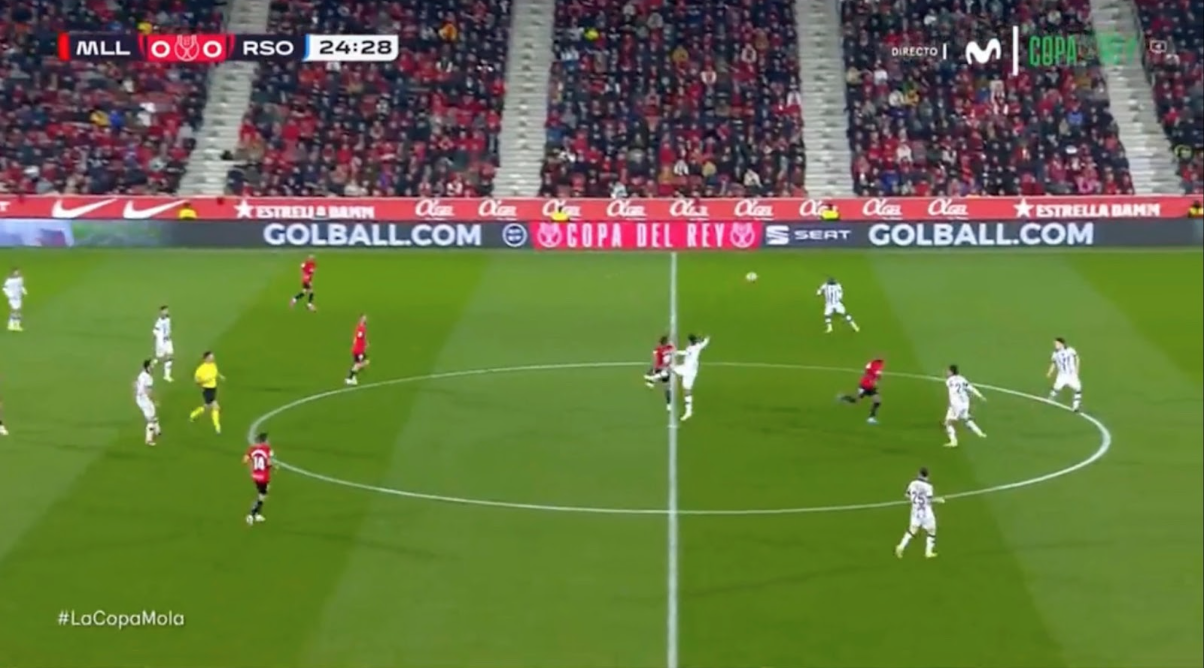
If one of the strikers does get a good connection, they will look for either one of these two things: 1) Head the ball through to an oncoming striker, who will attempt to carve out a shot on goal.
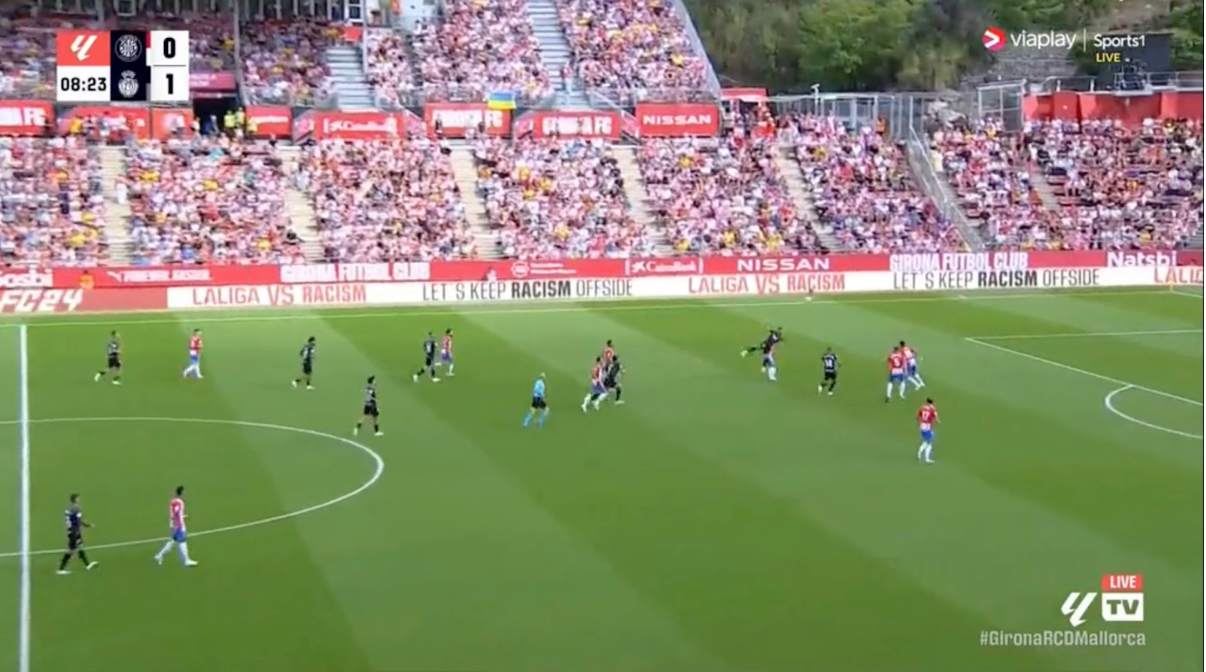

2) Head the ball down to a midfielder, who will create chances from there. Most often, the midfielders will look for out balls to one of overlapping wingbacks.
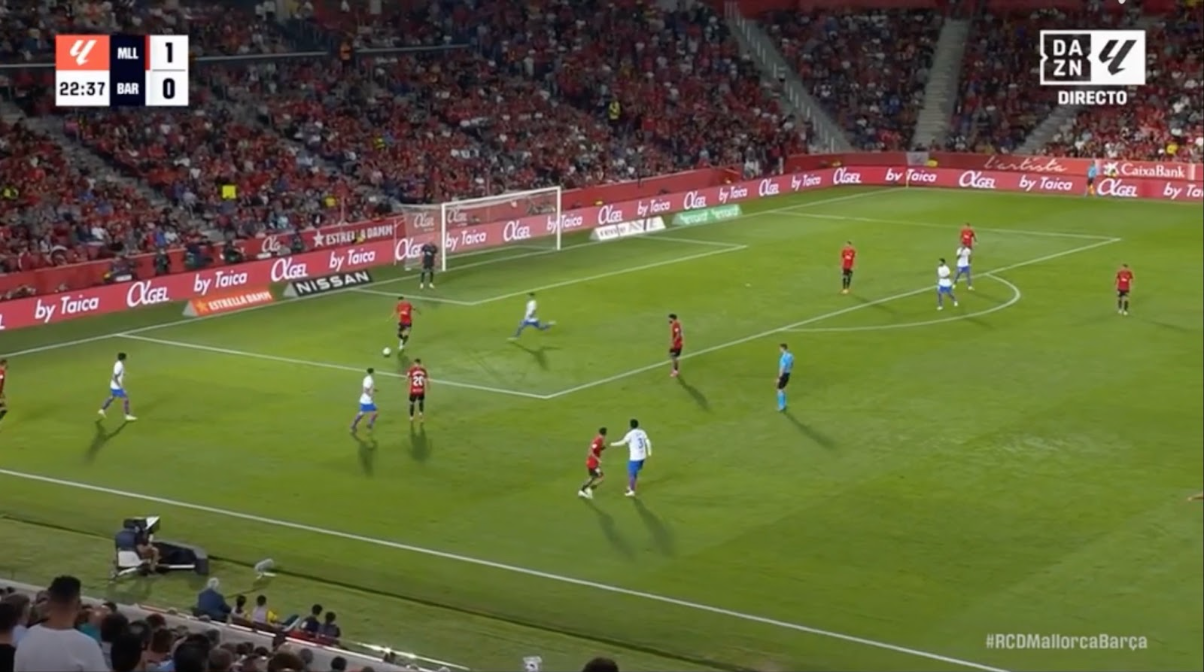
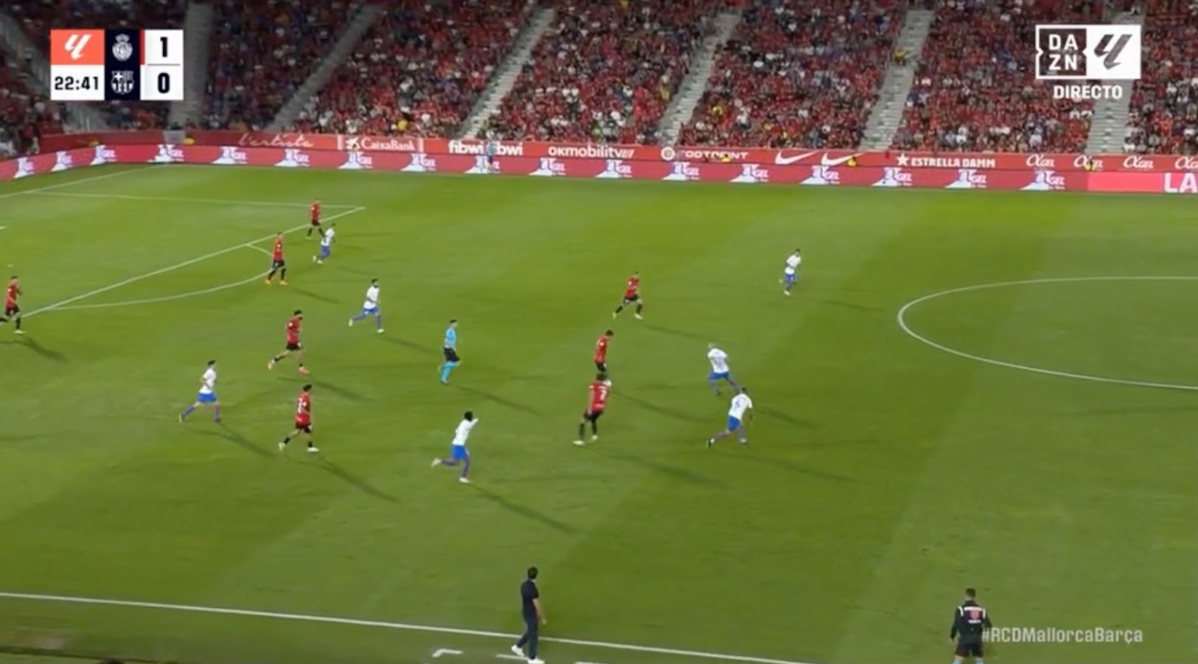
Mallorca don’t always utilize the long ball — at times they will use quick passing combinations. In this case, Mallorca will play out of a three-man defence, where the fullbacks act as wingers and Samú Costa is the deepest sitting midfielder.
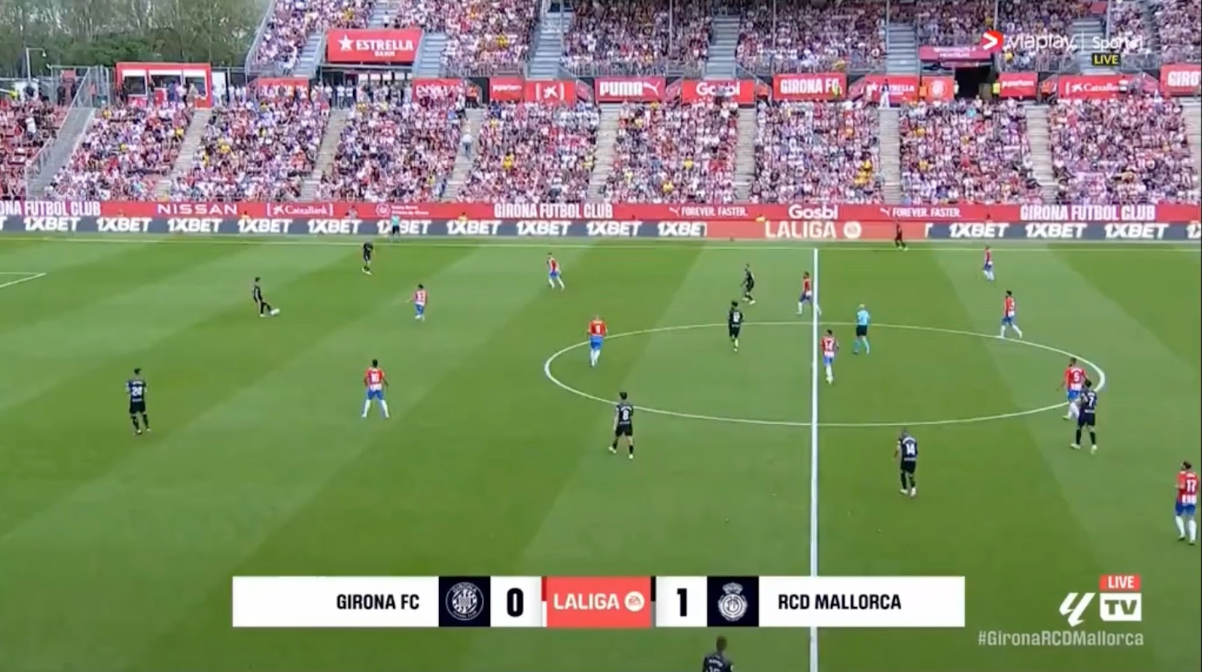
Here, Dani Rodríguez is completely free to receive due to Mallorca’s three midfielders coming close and thus occupying Girona’s midfield. In this game, the Mexican coach played the 5-4-1 formation, allowing Rodríguez (#14) to retain a more free role in the first phase of possession and shift into a second striker role in the final third. Mallorca will often go through the fullback or one of the midfielders to get through balls behind the opposition’s defence for Cyle Larin and Vedat Muriqi to run onto.
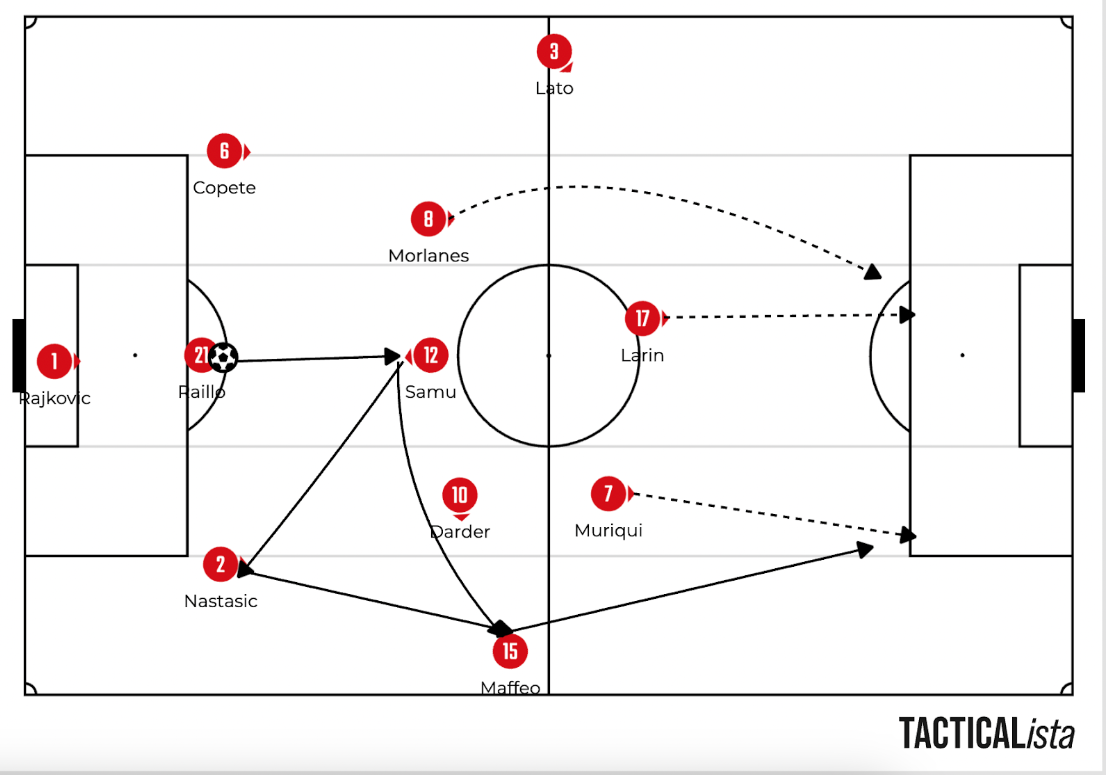
As possession progresses for Mallorca, one midfielder will have relative positional freedom, and this onus often falls on Rodríguez. When Mallorca play their 5-3-2 formation, Rodríguez will most often be inclined to split the strikers by coming through the middle or fill the channels as the wingbacks occupy the wide areas.
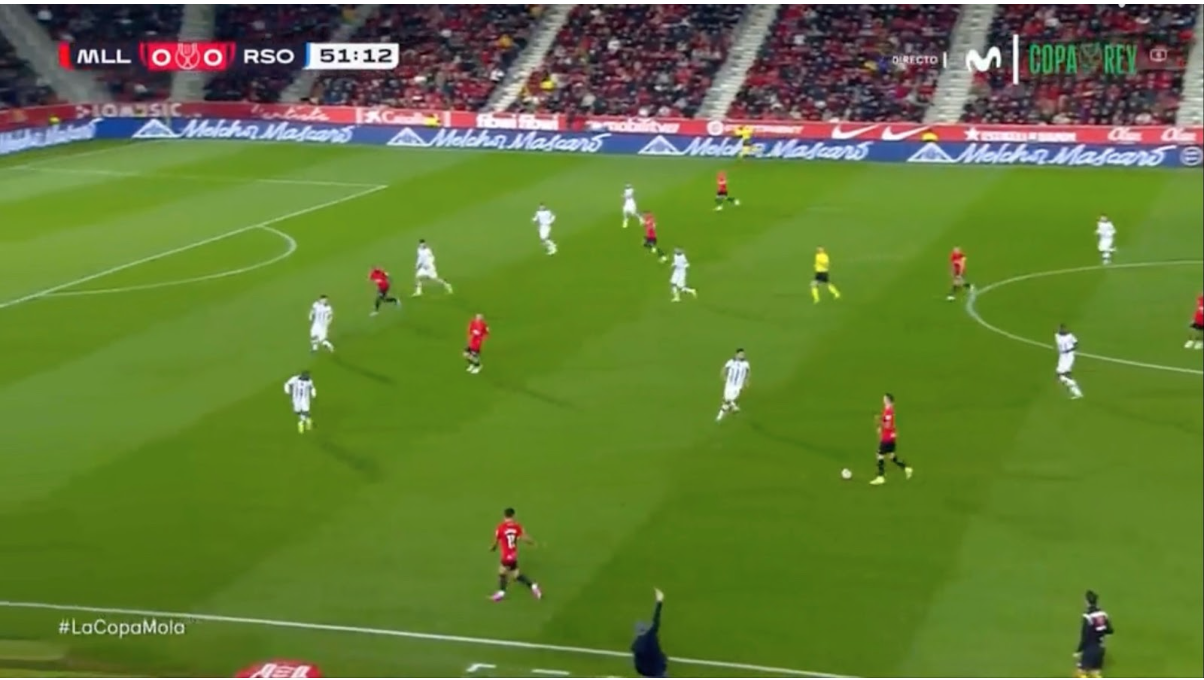
Since Mallorca mostly face four-man defences, Rodríguez filling channels is quite logical. Because by coming between the fullback and the centre-back he forces the fullback to make a decision: whether to follow the more imminent danger in Rodríguez or to cover the fullback.
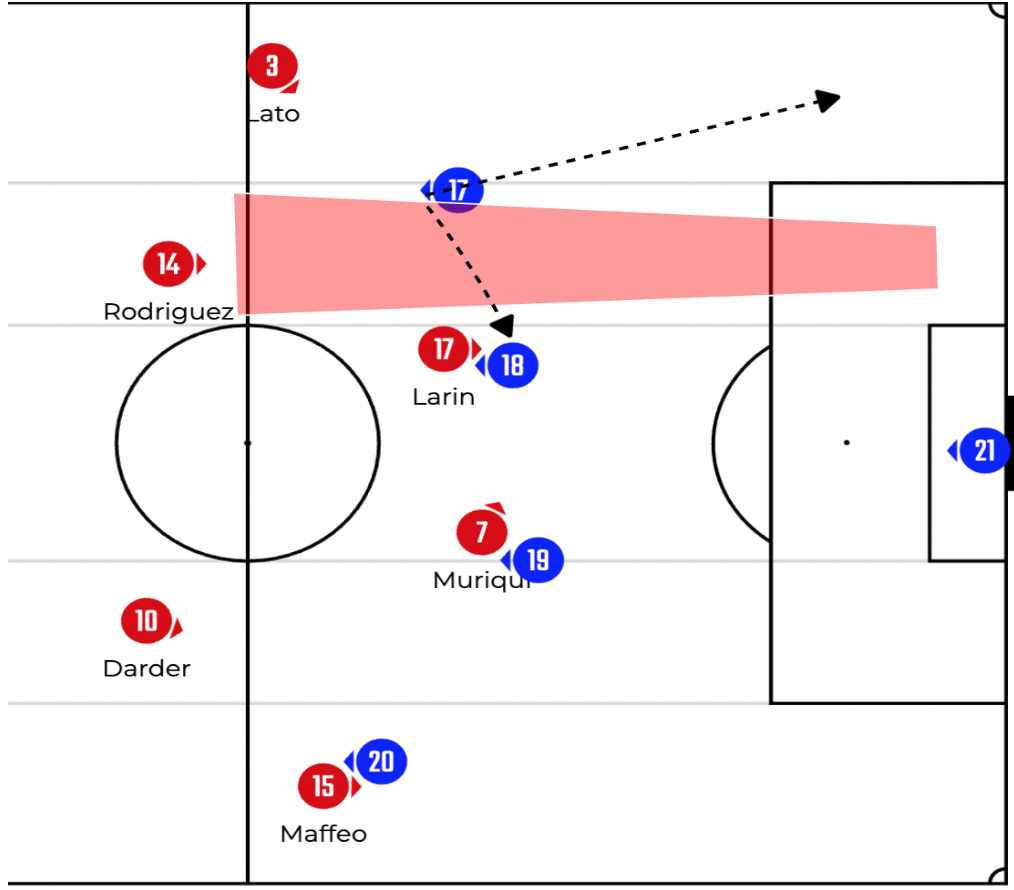
If Rodríguez opts for the splitting of the forwards he is a more direct danger for the opposition, either to take a shot or deliver passes around the box.
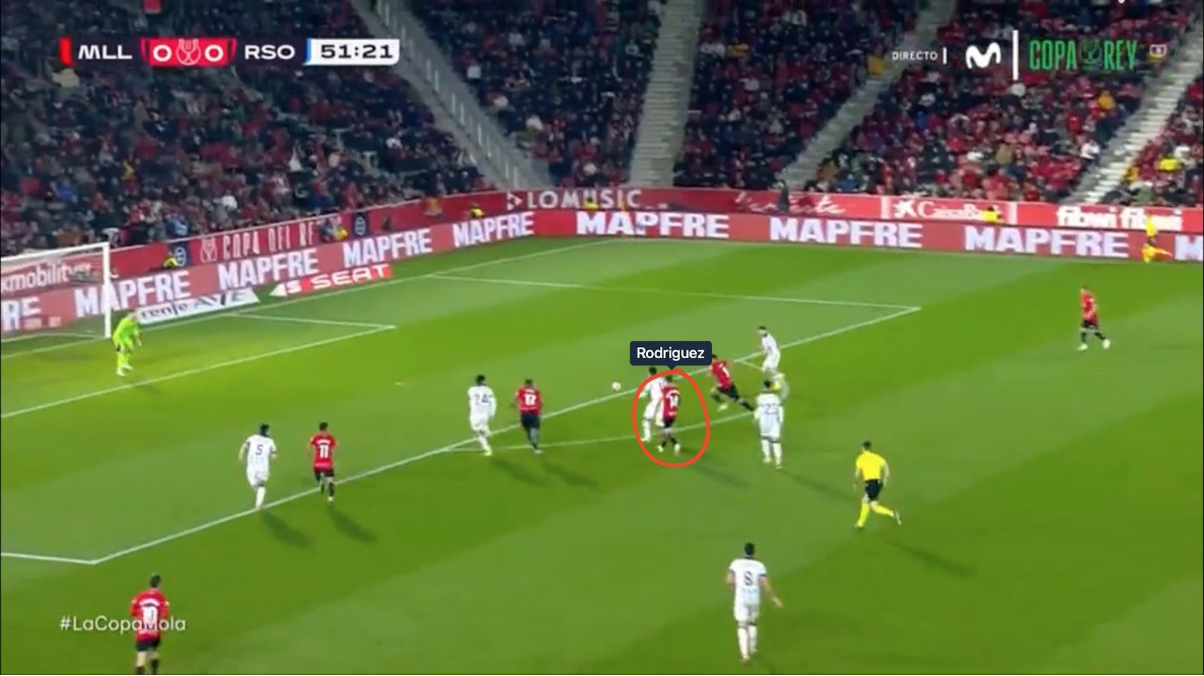
In the 5-4-1 formation, Rodríguez acts as more of a second striker, overlapping the lonely forward to create chances in that way.

But something that happens in both formations is one of the centre-backs moving up to replace Rodríguez which leaves Mallorca with only two centre-backs back in the second phase of possession.
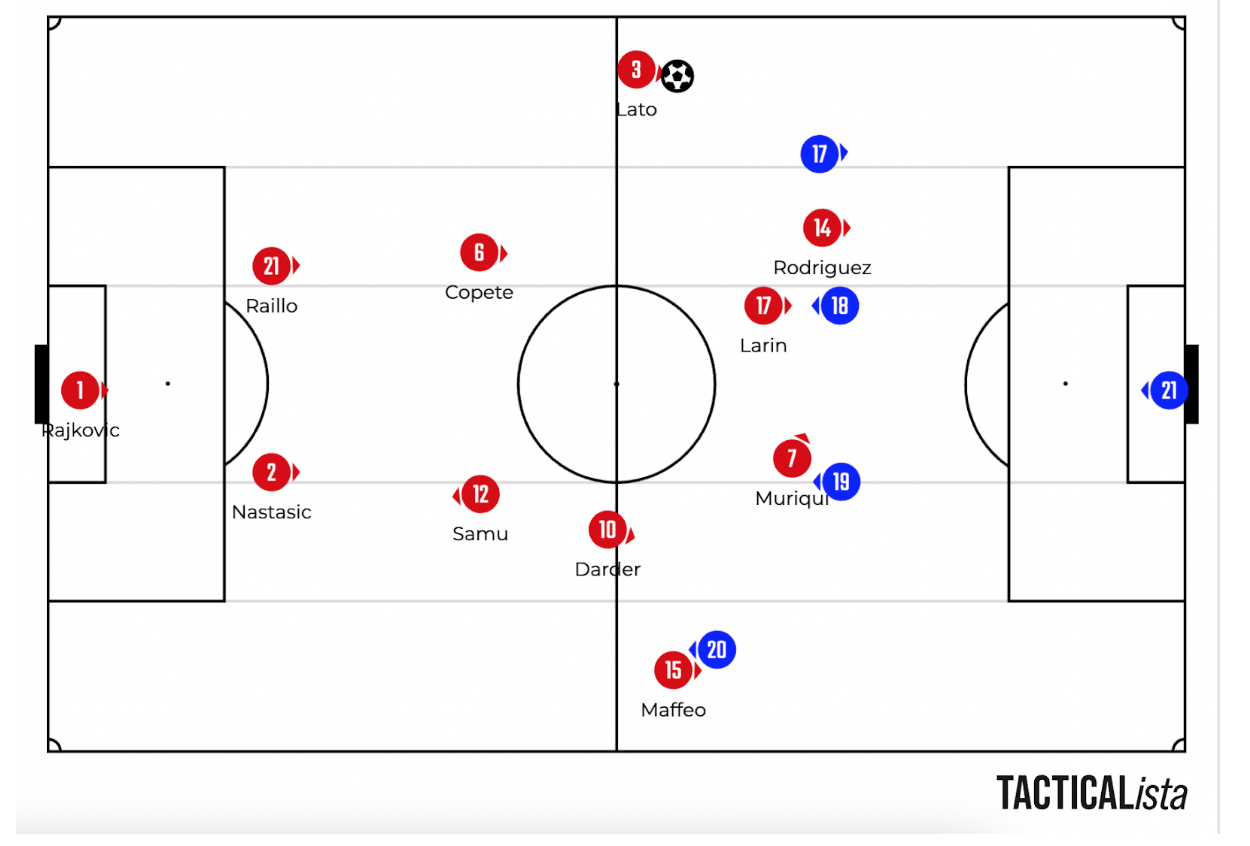
While this can at times leave Mallorca exposed for counter-attacks, the centre-back is fast enough to run back into position on time as the wingbacks run back as well. Out of possession, their shape is extremely visible. Here the 5-3-2 and 5-4-1 are almost identical. The two forwards press the centre-backs while one of the midfielders goes to the fullback.

As the strikers force the ball to one of the fullbacks they somewhat trap the ball as Mallorca quickly close down their opposition as they defend in their middle and attacking thirds. While the centre-back steps up in possession, he also steps up out of possession and that is a crucial piece of Mallorca’s defensive setup. Their high pressing leaves them in danger of being exposed, the centre-back stepping up quickly stops the opposition from becoming too dangerous.
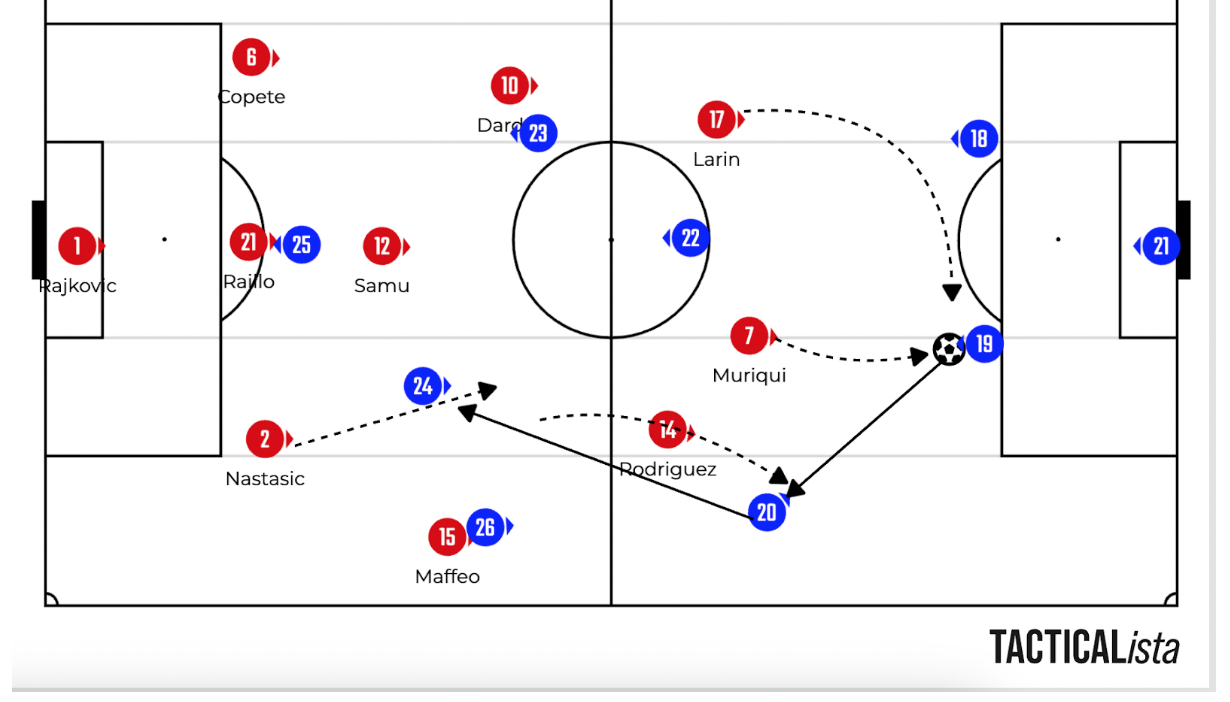
While an active defensive unit is not something you might directly expect when seeing their formation, Mallorca are not one to quickly give up. As Mallorca drop back further into their defensive third, their front-footed defenders will stay aggressive and keep stepping up to defend, closing down opponents instead of just sitting deep.
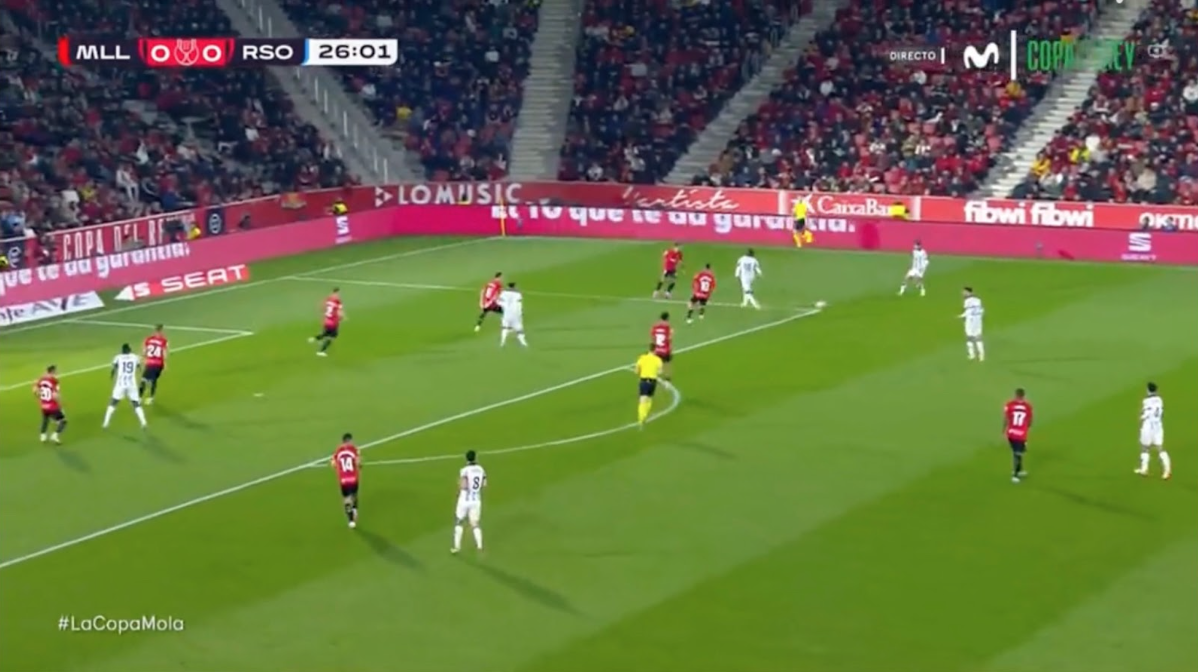
Cyle Larin will also drop back to stand just in front of the midfielders, the midfielders are also important in this area. It’s their duty to press the opposition as the defence tries to stick together closely and remain compact to avoid lethal counter-attacks. Mallorca have combined an active and pressing defence with a solid five-man block in front of goal, and it has worked to perfection in this season’s Copa del Rey.
90 minutes separate the Balearic side from the title, who drew 0-0 in their first meeting vs. Athletic in September before losing 4-0 in February at San Mamés. After ending March with a trip to Valencia, Mallorca have the chance to avenge their recent defeat and write their names in the history books as they take on Ernesto Valverde’s Athletic Club in Seville.
By: Teo Slehofer / @TeoSlehofer
Featured Image: @GabFoligno /
